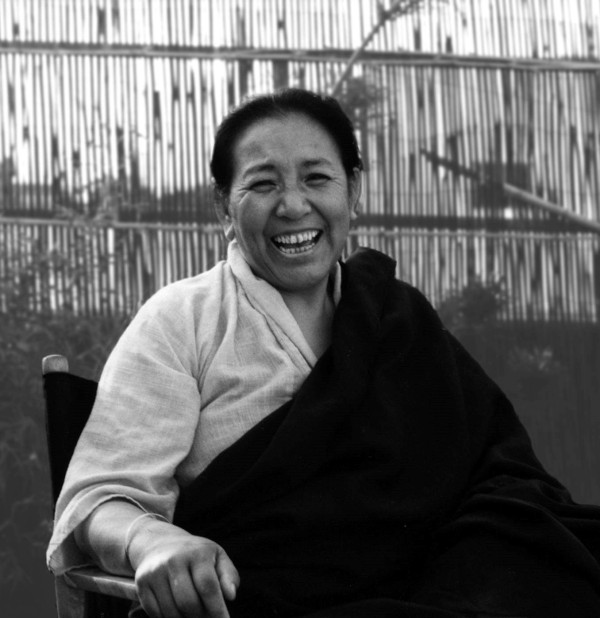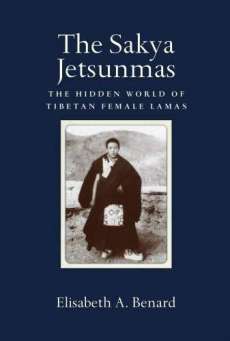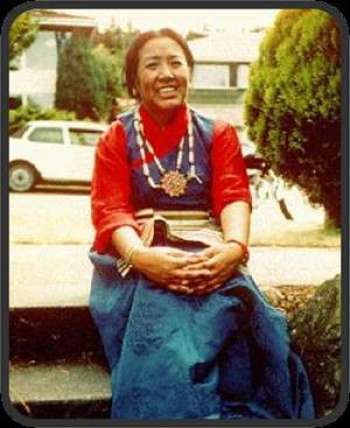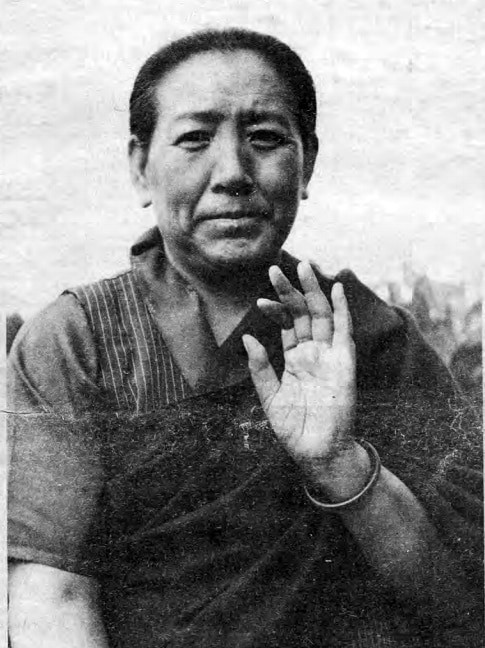
The lives of the Tibetan Sakya jetsunmas (‘venerable women’) are concealed, not by intention but simply by omission. Writing an account of a woman’s life mattered less than recording the details of a man’s life. Most Tibetans are unaware of the Sakya jetsunmas, and no scholar of Tibetan studies has written about them. This is the first book that chronicles their extraordinary lives. (9)
Elisabeth A. Benard has compiled a scholarly and riveting history of the Sakya jetsunmas, female Tibetan lamas, that is a most welcome new addition to the sparse canon of research into the vital topic of female Buddhist teachers. There have, of course, been female scholars, teachers, and realized yoginis in the long history of Tibetan Buddhism in all four major schools: Sakya, Gelug, Kagyu, and Nyingma. Documentation of their works and lineages, however, has often been obscured by patriarchy, and relegated only to their titles as “Khandro” or consort, the actual names lost or ignored. This important new book serves as a key stream of recovering history and chronicling the important contributions and life experiences that female lamas—in this case the Sakya jetsunmnas—have brought to Buddhist practitioners for centuries.
When I discovered that for a millennium the Tibetan Sakya Khon family has been raising their daughters to be spiritual adepts, I leapt for joy. This book focuses on the hidden world of the great female spiritual adepts who were born into the Sakya Khon Family. It is extraordinary to find an entire family that has been committed for centuries to supporting and guiding its children [female and male] to become wisdom holders, not for selfish reasons of fame and power, but to ensure their offspring have the proper means to help others in alleviating their suffering and to guide them on the path to enlightenment, or Buddhahood. (1)

The current living Sakya jetsunma is Jetsun Kushok-la, otherwise known by her full name and title as Her Eminence Sakya Jetsun Kushok Chimey Luding, who happens to be the sister of the 41st Sakya Trizin Rinpoche. Benard traces Jetsun Kushok-la’s lineage back through the centuries of preceding jetsunmas.
The book is highly readable and even gripping at times. Scholarly, yet never dry, it is alive with the warmth of the stories of family and lineage, as well as the transmission and uniquely non-dualistic style of the contemporary Jetsun Kushok-la herself. The book flows seamlessly between the spiritual and the secular teachings that Tibetan lamas, especially female lamas, so aptly embody and impart. Its sources are the oral traditions, what sparse written histories exist, and the many interviews that Benard conducted with the family of the 39th, 40th, and 41st Sakya trizins and jetsunmas. In multiple interviews over decades, family members elaborated on their genealogies, as well as family stories and anecdotes, all of which served to illuminate the rich fabric of the Sakya jetsunma lineage tapestry. The book relates to the particular geography of the Sakya clans in Tibet, their palaces and homes, core teaching cycles, and on through the Chinese Cultural Revolution and diaspora into India and the West.
While the book is a brilliant exposition of the breadth and depth of the contributions of the Sakya female lamas to Buddhism, it also highlights their uniqueness and places them soundly at the center of the lineage—never as the exception, but as the foundation. We would do well to have more books of this nature to flesh out much more fully the central female teachers of all four majorschools of Tibetan Buddhism who have been obscured, forgotten, or intentionally revised out of history simply due to their gender.
His Holiness Gongma Trichen Rinpoche, the 41st Sakya Trizin (b. 1945), has explained, “Buddha gave men and women equal rights to practice. But due to cultural circumstances, there are more male teachers.” Padmasambhava, the great Indian tantric master who was invited to come to Tibet in the eighth century, echoed the Buddha’s view by stating, “The basis for realizing enlightenment is a human body—male or female, there is no great difference. But if she develops the mind bent on enlightenment, the woman’s body is better.” Unfortunately, since the early days of Buddhism, women have been required to move beyond cultural prejudices, which tell them that they are not as spiritually capable as men. (2)

There is so much more in this rich and pivotal book than can be mentioned here, but poignantly, one reads of the losses from forced diaspora, and the silver lining of the flourishing of the Sakya lineage in exile:
Although it remains difficult to be a Buddhist in Tibet today, the Sakya school and its teachings are thriving in exile. Its extraordinary lamas can freely teach in most parts of the world, and they have many more disciples than they would have had in Tibet. Sakya as a place or principality has diminished in stature, but the importance of the Sakya school and the Khon family has proliferated. (39)
Sakya Jetsunma Kushok-la teaches extensively, has a multitude of students, and remains a vitally important lama for our times. Her bloodline and Dharma offspring perpetuate her teachings into a future that is in dire need of such wisdom and compassion. May her life be long and may she completely accomplish her wishes and her practice for the benefit of all sentient beings. I feel a deep gratitude for this book and for all the careful, loving research required to bring it into being, so that we all may drink of its inspiration and knowledge in reclaiming vital Buddhist history.

The ebook and second printing of The Sayka Jetsummas will become available in April 2022 from Shambhala Publications, with preorders beginning in fall 2021 (copies of the first printing by the Sapan Fund have run out).
See more












